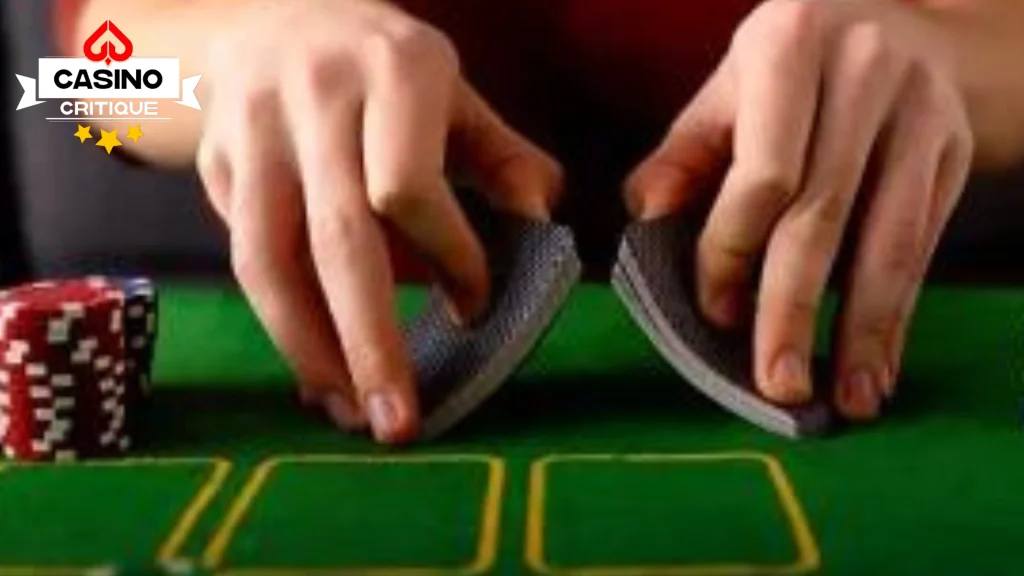Table of Contents
Introduction to Hi Lo Card Counting System
Hi-Lo card counting is a strategic approach to blackjack that empowers players to gain an advantage by tracking the proportion of high and low cards in the deck. Tailored for players in the United States, this guide offers a unique, step-by-step breakdown of the Hi-Lo system, focusing on practical application in multi-deck casino games. By mastering this technique, you can make informed decisions to optimize your bets and gameplay.

Basic of Hi-Lo Counting Cards
The Hi-Lo method is a balanced card counting strategy that assigns numerical values to cards to monitor the deck’s composition. A higher concentration of high cards (tens and aces) increases the player’s edge, while low cards favor the dealer. This system is straightforward, making it ideal for both novices and experienced players navigating U.S. blackjack tables, where six or eight-deck shoes are common.
The Importance of Card Value
In the Hi-Lo card counting system, each card holds a value that impacts your odds. High cards (10s, face cards, and aces) are valued at -1, low cards (2-6) at +1, and neutral cards (7-9) hold no value. This valuation helps predict the likelihood of receiving a high card, giving players an advantageous insight into bet sizing and gameplay decisions.
Assign Card Values
To begin, assign point values to each card rank as follows:
- Low cards (2, 3, 4, 5, 6): +1
- Neutral cards (7, 8, 9): 0
- High cards (10, Jack, Queen, King, Ace): -1
As cards are revealed, mentally add or subtract these values. For example, seeing a 5 (+1) and a Queen (-1) results in a net count of zero. Accurate assignment of these values is the cornerstone of effective counting
Maintain a Running Count
The running count is the whole total of card values you track during a game. Begin at zero when a fresh shoe is dealt. For instance, if the first three cards are a 2 (+1), a 9 (0), and an Ace (-1), your running count is zero. Staying focused in a lively casino environment is crucial, as you must update this count with every card dealt.
Calculate the True Count
In multi-deck games, the running count alone isn’t enough. Convert it to a true count by dividing by the estimated number of decks left in the shoe. For example, a running count of +8 with four decks remaining yields a true count of +2 (+8 ÷ 4). This step refines your understanding of the deck’s favorability, aligning with the multi-deck setups prevalent in U.S. casinos.
Adjust Betting Strategy
Use the true count to guide your betting. A positive true count (e.g., +3 or higher) signals a deck rich in high cards, favoring the player. Increase your bet size in these scenarios to capitalize on the advantage. If the true count is zero or negative, lower your bets to reduce risk. This dynamic betting approach maximizes your potential returns while managing losses.
Apply Playing Deviations
The Hi-Lo system also informs strategic deviations from standard blackjack play. Based on the true count, you might alter decisions like hitting, standing, or taking insurance. For example, with a true count of +4, you might stand on a 12 against a dealer’s 3, deviating from basic strategy. These adjustments, often drawn from key plays like the “Illustrious 18,” enhance your edge in favorable situations.
Practice the Hi-Lo System
Proficiency demands regular practice. Start by counting through a single deck, ensuring your final count returns to zero to confirm accuracy. Progress to multi-deck scenarios and simulate casino distractions, such as noise or conversation. Mobile apps or online trainers can accelerate your learning, helping you build the speed and precision needed for real-time play.
Manage Your Bankroll
Smart bankroll management sustains your ability to use the Hi-Lo system effectively. Establish a training budget and adhere to it, avoiding impulsive bets during losing streaks. A recommended bankroll is at least 100 times your base bet—for example, $2,000 for a $20 average bet. This cushion helps you endure the natural ups and downs of blackjack.
Evaluate Advantages and Disadvantages
The Hi-Lo system offers distinct benefits but comes with challenges:
- Advantages:
- Easy to learn, suitable for players new to card counting.
- Effective in multi-deck games, aligning with U.S. casino standards.
- Provides a statistical edge when applied consistently.
- Disadvantages:
- Demands intense focus, which can be difficult in busy casinos.
- Short-term losses are possible due to variance, even with a positive count.
- Casinos may identify and restrict counters, impacting your ability to play.
By weighing these factors, you can approach Hi-Lo card counting with confidence and clarity.
How to Adjust Your Bets According to the Count
When using the Hi-Lo strategy, adjusting bets is crucial. As the count increases, indicating more high-value cards left in the deck, players should up their bets to maximize potential wins. Conversely, when the count is low, suggesting fewer favorable cards, reducing the bet size is wise to mitigate losses. This savvy bet adjustment can significantly shift blackjack odds in a player’s favor.
Conclusion and Further Considerations
In wrapping up, the meticulous application of the Hi-Lo strategy emerges as a potent tool for enhancing blackjack odds. Supported by concrete data, its efficacy stands out, although players must navigate casino countermeasures with discretion. The path to mastery requires perseverance and continual learning. Moreover, recognizing opportune moments for surrender in blackjack introduces an additional layer of strategic finesse, enriching the overall gameplay experience.



















